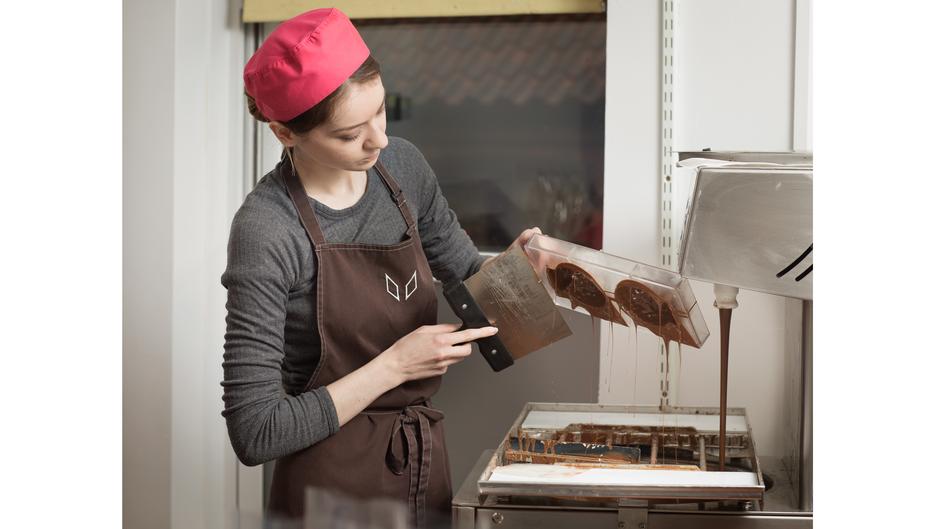Chocolate starts to melt at 32℃, and so, as soon as it touches the body it melts (body temperature is approximately. 36.5 - 37℃). Chocolate is one of the few substances on earth that melts within the range of temperatures humans can tolerate. Such a low melting point is one of one chocolate’s marvellous properties - we can watch it melt, but what’s more we can feel it melt on the tongue!
Chocolate contains two active ingredients - phenylethylamine and theobromine, both of which produce a chemical reaction in the body. Phenylethylamine causes the production of dopamine. Dopamine is one of the ‘happy hormones’ and creates the magical feeling we get when we fall in love - so you could say when we eat chocolate we are falling in love with it!
Theobromine, which in greek actually means ‘food of the gods’, is a mild stimulant and when consumed makes us feel good. Most creatures however are intolerant to theobromine - dogs being the classic example, so don’t give your dog chocolate!
At the molecular level chocolate is a crystal. The process of tempering - heating and cooling the chocolate to several different temperatures - causes the crystal structure of the chocolate to change. The aim of this process is to create the largest crystals possible.
We could compare untempered and tempered chocolate to mirrors. A shattered mirror is like untempered chocolate - it is composed of many small pieces (akin to many small crystals in chocolate), and will give a poor reflection. If chocolate has these qualities it will not taste as pleasant and will not break up very well. On the other hand, a well tempered chocolate is like an unbroken mirror (equivalent to one large crystal), it has an excellent reflection or shine and will snap beautifully with a satisfying sound - it also tastes better!
More details about White Rabbit chocolate shop and café can be found here https://whiterabbitchocolatiers.co.uk.



